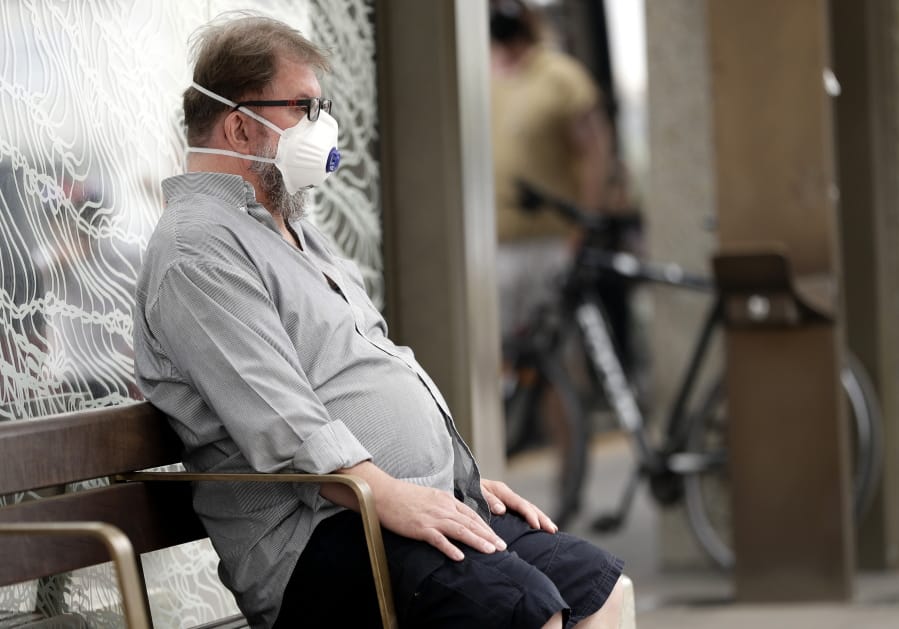CANBERRA, Australia — Fire alarms have been sounding in high-rise buildings across downtown Sydney and Melbourne as dense smoke from distant wildfires confuse electronic sensors. Modern government office blocks in the Australian capital Canberra have been closed because the air inside is too dangerous for civil servants to breathe.
The sun has glowed an eerie red behind a brown shrouded sky for weeks over Australian metropolitan areas that usually rank high in the world’s most livable cities indexes.
It’s an unprecedented dilemma for Australians accustomed to blue skies and sunny days that has raised fears for the long-term health consequences if prolonged exposure to choking smoke becomes the new summer norm. Similar concerns over smoke are emerging in other regions of the globe being impacted by more fires tied to climate change, including the Western U.S.
“I’m going to give birth any day now, literally, and I’m going to have a newborn baby that I’m going to protect from all this,” said Emma Mauch, a pregnant Canberra mother.
Her friend, Sonia Connor, described the struggle of keeping her own energetic 3-year-old daughter contained inside their Canberra house with windows and doors sealed by tape as the outside temperature exceeded 108 degrees Fahrenheit. It’s a choice between air flow in stifling heat or keeping potentially toxic smoke out.
“My daughter hasn’t shown any sort of symptoms, let’s say. For me, I can feel it in my lungs, my throat has felt weird,” Connor said.
“It doesn’t seem to be stopping her, but the long-term effects? Who knows? She’s 3. Who knows what’s going to happen?” she added.
Slovenian tennis player Dalila Jakupovic fell to her knees in a coughing fit on Wednesday while competing in a qualifying match for the Australian Open in Melbourne.
“I’ve never experienced something like this,” Jakupovic told Nine Network TV.
“We are used to pollution — like, we play in China and more polluted countries — but this smoke is something different that for sure we’re not used to.”
Canberra as well as Australia’s two largest cities, Sydney and Melbourne, have at various times in recent weeks rated as the most polluted cities in the world, although some argue the industrial pollutants in places such as New Delhi are more dangerous than wood smoke.
The fires have claimed at least 28 lives since September, destroyed more than 2,600 homes and razed more than 25.5 million acres, mostly in New South Wales state. The area burned is larger than the U.S. state of Indiana.
Victoria state increased its official fire death toll by one to five on Wednesday when it reclassified the death of a fire management contractor in a traffic accident in November as a victim of the current wildfire crisis.
Hospital admissions have increased in the smoke-affected cities, with some patients suffering asthma for the first time in their lives. The government has responded by distributing 3.5 million free particle-excluding masks.
Acting Australian Chief Medical Officer Paul Kelly said he was discussing with the government launching a study of the long-term health implications of the wildfire smoke.
Bruce Thompson, president of the Thoracic Society of Australia and New Zealand, is among the respiratory disease experts who predict increases in heart and lung diseases as well as some cancers if climate change makes prolonged exposure to wildfire smoke an annual phenomenon.
“We’re breathing in stuff that the lungs don’t like that leads to significant changes, especially people who are predisposed to respiratory conditions,” Thompson said.
Thompson, who suffers itchy eyes and a running nose from smoke at home in Melbourne, said comparisons could be drawn between the current crisis and a wildfire that ignited coal in the open-cut Hazelwood mine near the town of Morwell in Victoria state in 2014. The fire burned for 45 days, blanketing Morwell and its 14,000 residents in thick smoke and coal dust.
That exposure was still taking tolls on the health of the Morwell community and the wider Latrobe Valley, Thompson said.
Brian Oliver, head of the Respiratory Molecular Pathogenesis at University of Technology Sydney, likened prolonged and repeated exposure to such fire smoke to smoking cigarettes.
Oliver predicted increases in smoker diseases across Australia if the wildfire smoke became more common in a drier, hotter future.



